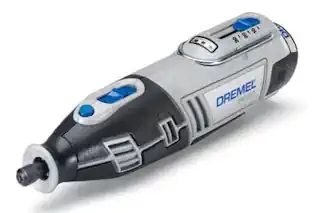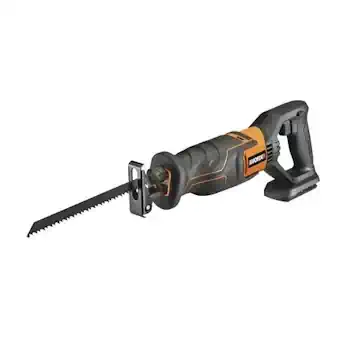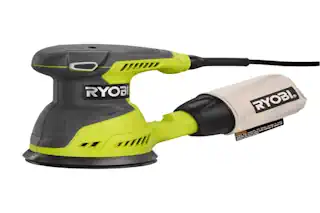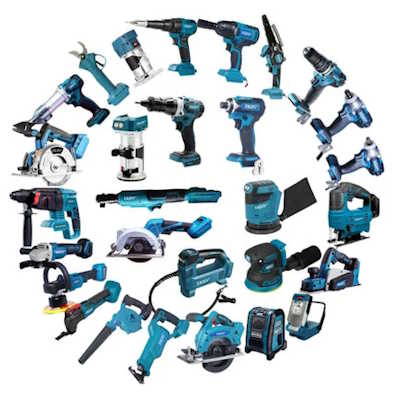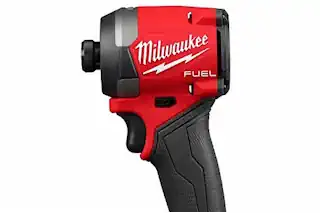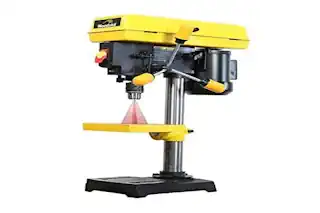A Beginners Guide to Using Nail Guns: For DIY Enthusiasts and Professionals Alike

Introduction
Nail guns are a game-changer in every way in the world of construction and DIY projects. Whether you’re building furniture, framing a house, or working on a small home improvement project, nail guns offer speed, accuracy, and power. But like any tool, proper use and safety are paramount.
In this guide, we’ll walk you through everything you need to know about using nail guns, from safety precautions to troubleshooting common issues. Let’s get started!
Safety First: Precautions and Safety Guidelines
Before we dive into the nuts and bolts of using a nail gun, let’s talk safety. I have managed to shoot my hand or foot with every nail gun I own. My most recent failure was nailing my finger to a roof while putting down asphalt shingles with a roofing nail gun as shown above. Of course, I should also admit I would have smashed that finger with a hammer if I had been using a hammer.
Here are some essential precautions to keep in mind:
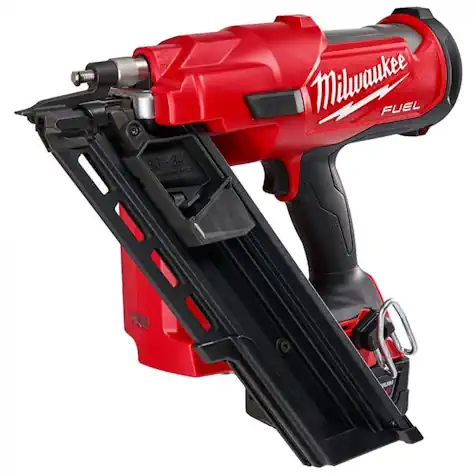
- Wear Protective Gear: Always wear safety glasses and hearing protection. Gloves can also be beneficial for handling materials.
- Read the Manual: Familiarize yourself with the manufacturer’s instructions and guidelines.
- Check Your Surroundings: Ensure the work area is clear of bystanders, especially children and pets.
- Disconnect When Not in Use: Always disconnect the nail gun from its power source when loading nails or when it’s not in use.
- Keep Fingers Away from the Trigger: Only place your finger on the trigger when you’re ready to fire.
- Know Your Target: Be sure to know where the nail is traveling and keep fingers or toes away from where the nail may emerge after it travels through the material.
Types of Nail Guns
Nail guns come in a variety of various types, each designed for specific tasks. Here’s a quick overview:

- Brad Nailers: Ideal for light trim work and delicate woodworking projects.
- Finish Nailers: Perfect for crown molding, baseboards, and other finishing touches.
- Framing Nailers: Used for heavy-duty tasks like framing walls and building decks.
- Roofing Nailers: Specifically designed for installing shingles and other roofing materials.
- Staple Guns: While not technically nail guns, they’re often used for similar applications like upholstery and insulation.
Preparing for Use
Preparation is key to ensuring a smooth operation. Here are the steps to follow before using your nail gun:
- Inspect the Tool: Check for any visible damage or wear.
- Check the Air Compressor: If you’re using a pneumatic nail gun, ensure the air compressor is functioning correctly and set to the appropriate pressure.
- Check Your Cable Length: Can you reach your target from start to finish or will you need to stop and move the air hose or electrical cord?
- Load the Nails: Open the magazine and load the nails according to the manufacturer’s instructions.
- Test Fire: Perform a test fire on a scrap piece of material to ensure everything is working correctly.
Using the Nail Gun
Now that you’re ready, here’s how to use the nail gun effectively:
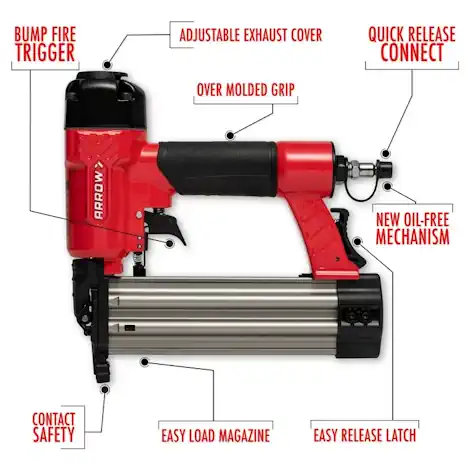
- Hold the Gun Properly: Grip the handle firmly and position the nozzle against the material.
- Aim Carefully: Ensure you’re aiming at the correct spot and that the material is aligned as needed.
- Fire the Nails: Press the safety tip against the surface, then pull the trigger. Keep the gun steady to avoid misfires.
- Expect Recoil: All nail guns will generate some degree of recoil. Don’t be surprised but if find you are consistently double-nailing as a result of the recoil it may be time to take a break.
Troubleshooting Common Issues
Even with access to the best tools, issues can arise. Here are some common problems and how to fix them:
- Jammed Nails: Disconnect the tool, open the magazine, and carefully remove the jammed nails.
- Misfiring: Check the air pressure and ensure the nails are loaded correctly.
- Leaking Air: Inspect the hose and connections for leaks and tighten them as necessary.
- Directional Control: Shooting at an angle out of the side of your material or breaking the material altogether.
Maintenance Tips
Regular maintenance will keep your nail gun in top shape:
- Clean Regularly: Remove dust and debris after each use.
- Check Gaurds and Adjustments: Some adjustment and guide devices will become loose over time and will need to be tightened or adjusted back to factory-recommended settings.
- Lubricate: Apply a few drops of oil to the moving parts periodically (check your manual for specific instructions).
- Store Properly: Keep your nail gun in a dry, safe place when not in use.
Conclusion
Using a nail gun can significantly enhance your efficiency and precision in various projects. By following safety guidelines, choosing the right type of nail gun, and performing regular maintenance, you can ensure a smooth and productive experience.
We hope this guide has been informative and helpful. Now, go ahead and tackle your next project with confidence! And remember, safety first!
Frequently Asked Questions (FAQ)
Can I use any type of nail in my nail gun?
No, it’s essential to use the recommended nails specified by the manufacturer for your particular nail gun model. Using the wrong type or size of nails can lead to jamming, misfires, and even damage to the tool.
What should I do if my nail gun jams frequently?
If your nail gun is jamming frequently, first ensure you are using the correct nails and loading them properly. Regular maintenance, such as cleaning and lubricating the tool, can also help prevent jams. If the problem persists, consult the manufacturer’s troubleshooting guide or contact customer support.
How do I maintain my air compressor for a pneumatic nail gun?
To maintain your air compressor, regularly check the oil level (if applicable), drain the tank to remove moisture, and inspect the hoses for any signs of wear or leaks. Keeping the air filter clean will also ensure the compressor runs smoothly.
Can I use a nail gun for outdoor projects?
Yes, nail guns can be used for outdoor projects such as building decks, fences, or sheds. However, ensure that you choose a suitable type of nail gun, like a framing nailer, and use nails that are treated for outdoor conditions to prevent rust and corrosion.
Is it normal for a nail gun to recoil?
Yes, some degree of recoil is normal with nail guns. If you find that the recoil is causing you to double-nail your pieces or become uncomfortable, it might be a good idea to take a break, check your technique, or ensure the correct air pressure is being used for pneumatic models.
What safety gear should I wear when using a nail gun?
Always wear safety glasses and hearing protection when operating a nail gun. Gloves can also be beneficial to protect your hands from materials and sharp edges, but ensure they do not interfere with your ability to handle the tool safely.
Can a nail gun be used by beginners?
With the proper instruction and a thorough understanding of safety precautions, beginners can safely use nail guns. Start with easier projects and lighter nailers, like brad or finish nailers, to build confidence and experience.
How often should I perform maintenance on my nail gun?
Regular maintenance such as cleaning and lubrication should be performed after each use. Periodic inspections of the tool for any wear and tear, checking the tightness of adjustment devices, and ensuring overall functionality should be done monthly or according to the reference manual’s specific guidelines.
